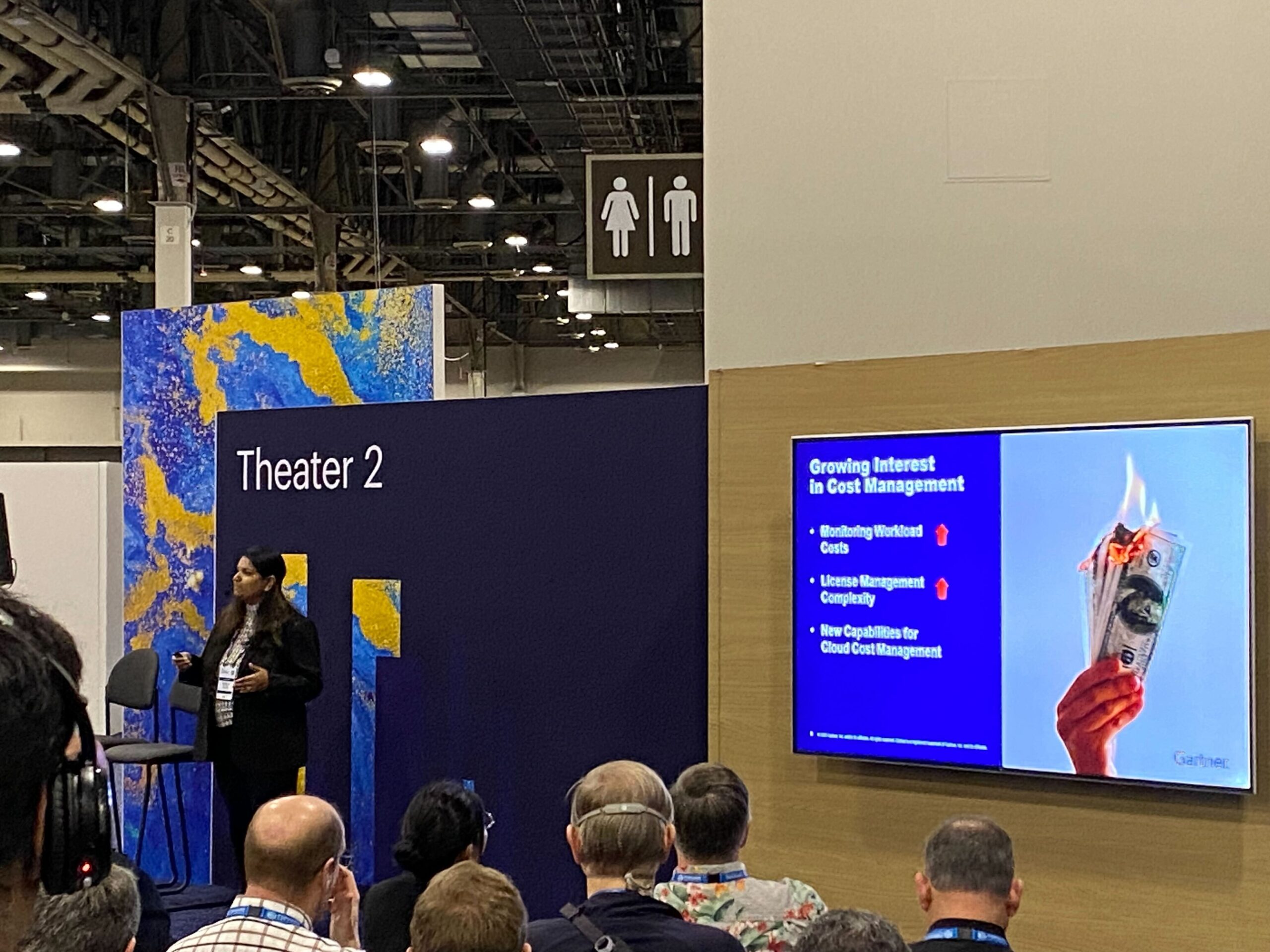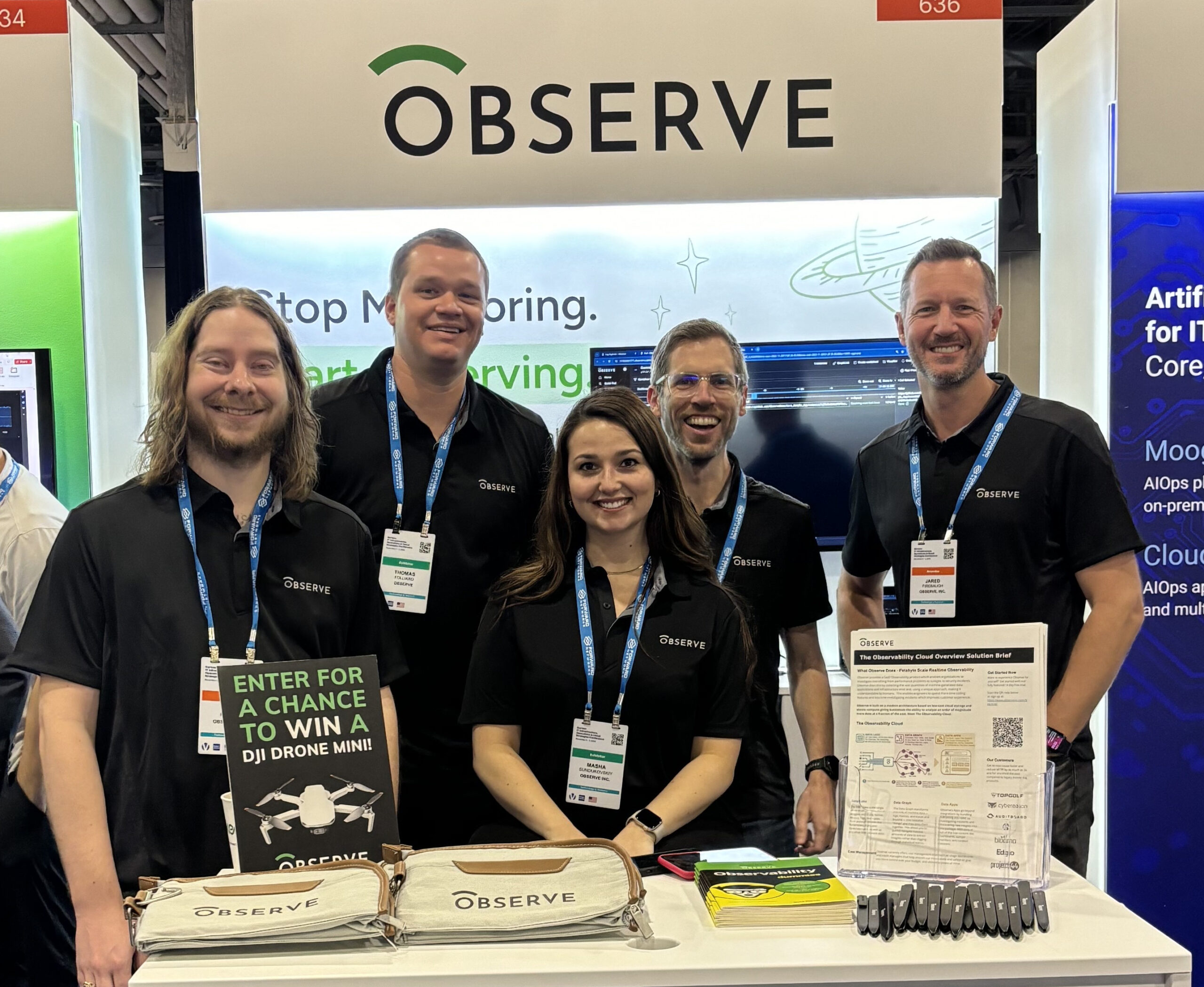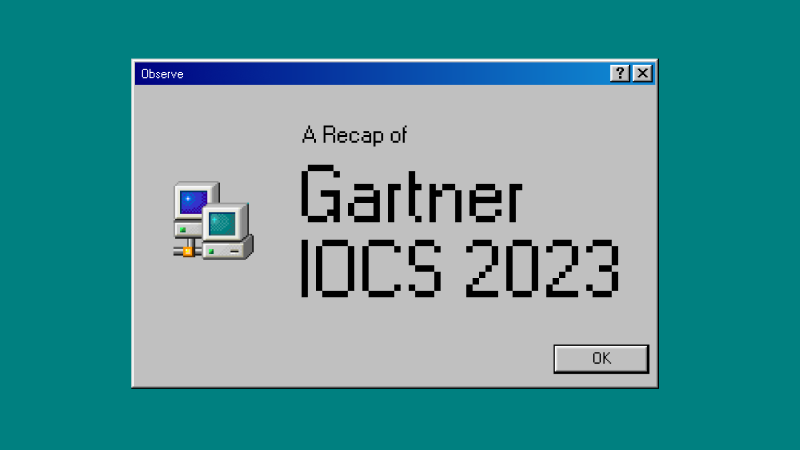A Recap of Gartner IOCS 2023
The Gartner IT Infrastructure, Operations and Cloud Strategies conference is not one of the bigger tech conferences of the year, but it does offer a unique audience and a chance to chat with some of the experts from the world’s leading analyst firm. For the second year in a row, we went back to IOCS to spread the word about observability. This time we found the audience even more interested as a greater number of attendees were looking to start their observability journeys or uproot their legacy monitoring tools.
The Content
The content at IOCS is always a mix of presentations from Gartner analysts and the event sponsors. Because there was a small village of observability vendors this year, observability was well represented in the presentation track. Wrangling hybrid infrastructure, ensuring cost effectiveness of observability tools, and getting the most out of your data with AI were some of the topic sessions.
From the Gartner team there was naturally a session on the Application Performance Monitoring and Observability Magic Quadrant (previously the APM MQ, but observability was added to the mix in 2022). Gartner Director Analyst Mrudula Bangera also presented on The Future of Observability. The theme of this presentation was connecting disparate data sources to provide actionable context (something the Observability Cloud is designed to do). As to be expected, the ongoing pain from tooling cost and application complexity came up in most of the observability related presentations.

On the security front, there was a presentation from Senior Director Analyst Daniel Betts and VP Analyst Paul Furtado on the friction between I&O leadership and CISOs. The idea put forth in the presentation was that I&O are looking at the same challenges through different lenses, and that collaboration is essential. We’ve seen in our own data that 84% of respondents indicate their organization combines security and data operations into a single analytics tool, but this is significantly less common amongst older organizations, where 19% of organizations that have been in business for over 10 years do not have this consolidated. Two different lenses are one thing, but they both need to be able to see the same picture.
The Audience
As previously mentioned, the audience for Gartner IOCS is a unique one. It’s a relatively small event, as attendance is in the 4,000-5,000 range, but it’s rare to find such a collection of managers and leadership from Fortune 500s under one roof. Financial services and public sector organizations are typically well represented, and this year was no different.
Conversations were anchored on the fact that nearly all organizations we talked to were already inundated with tooling chosen by different teams within their organization that they were struggling to maintain or make use of. Cost was, of course, a factor, but with these particular organizations, it was often the inability to correlate data or have a meaningful context for siloed data that was the most prominent pain point. Many attendees were dealing with growing cloud footprints as their organizations modernized and shifted more away from on-premises, and the warning signs of the data tsunami were being seen rather quickly. There was certainly a healthy dose of skepticism as well with questions like “is observability really that different from monitoring?” We exhausted our supply of Observability for Dummies rather quickly, but you can always grab a PDF copy here.
The Venue
Just like AWS re:Invent this year, Gartner IOCS was in the Venetian in Las Vegas. However, IOCS is a more condensed event and attendees need not trek the entirety of the complex to get between sessions and the exhibition hall, which actually had exhibitors grouped logically for the most part (hardly the case at some other events). One perk of this particular location is always food. They say what happens in Vegas stays in Vegas, but the memory of the smoked black cod at Mott 32 will stay with us.

TLDR
Gartner IOCS tends to draw in senior leadership from more mature long standing organizations with slower moving modernization efforts. However, this year was an indicator of the growing mainstream interest in observability as more of these organizations sought to move away from aging monitoring tools that were failing to keep up.
Observe received the Gartner Cool Vendor accolade back in 2021 after we had emerged from stealth. Since then the product has evolved tremendously as we continue to build on top of our unique Data Lake architecture. The presentations and conversations at Gartner IOCS emphasized the need to have unified data that can be given context so that users can expedite troubleshooting, all without obliterating the organization’s IT budget. That’s exactly what Observe has been designed to do.
Want observability that can unify all of your data and give your teams the context they need to take action? Get started by signing up for the free trial of Observe here.

